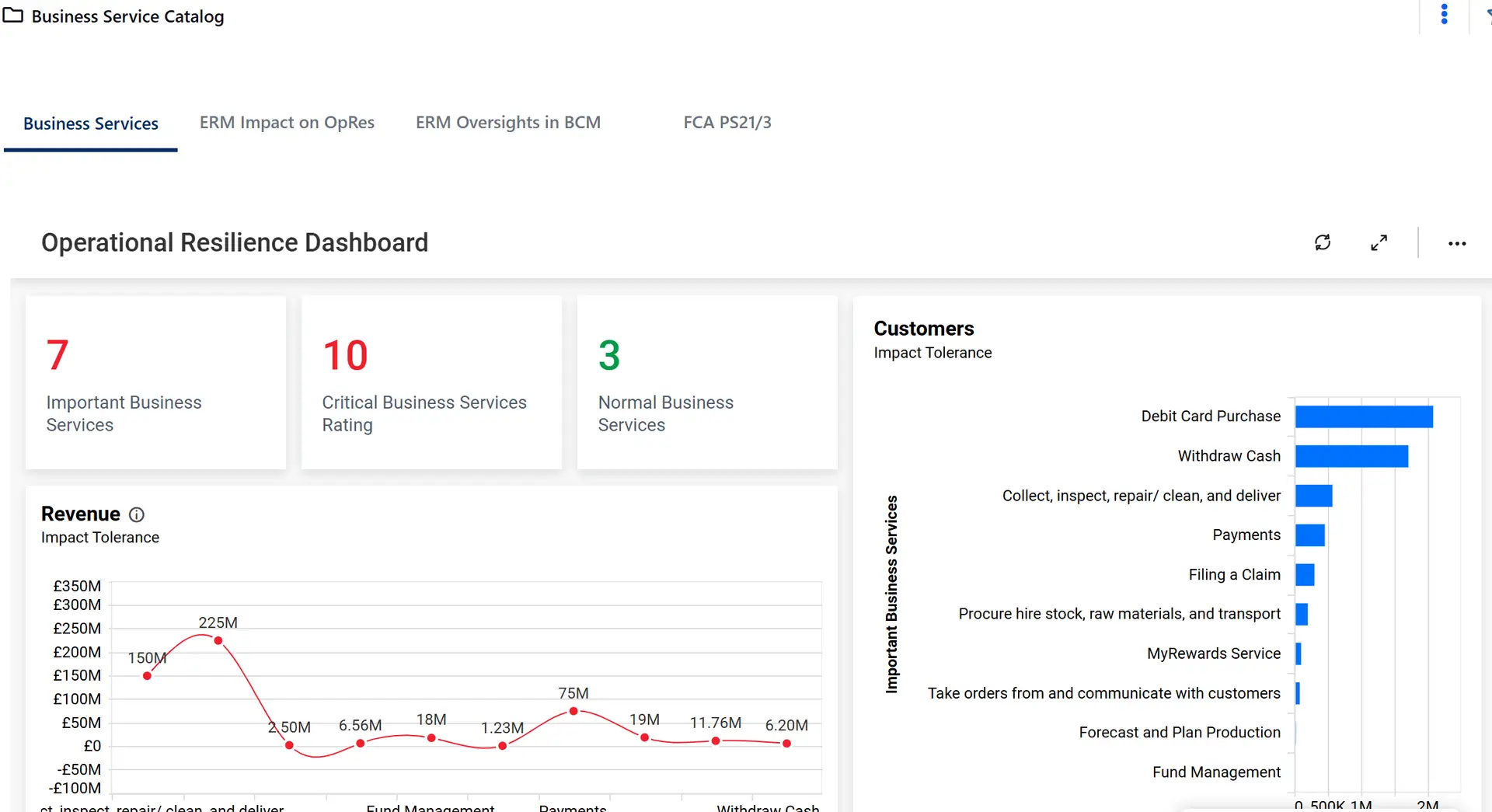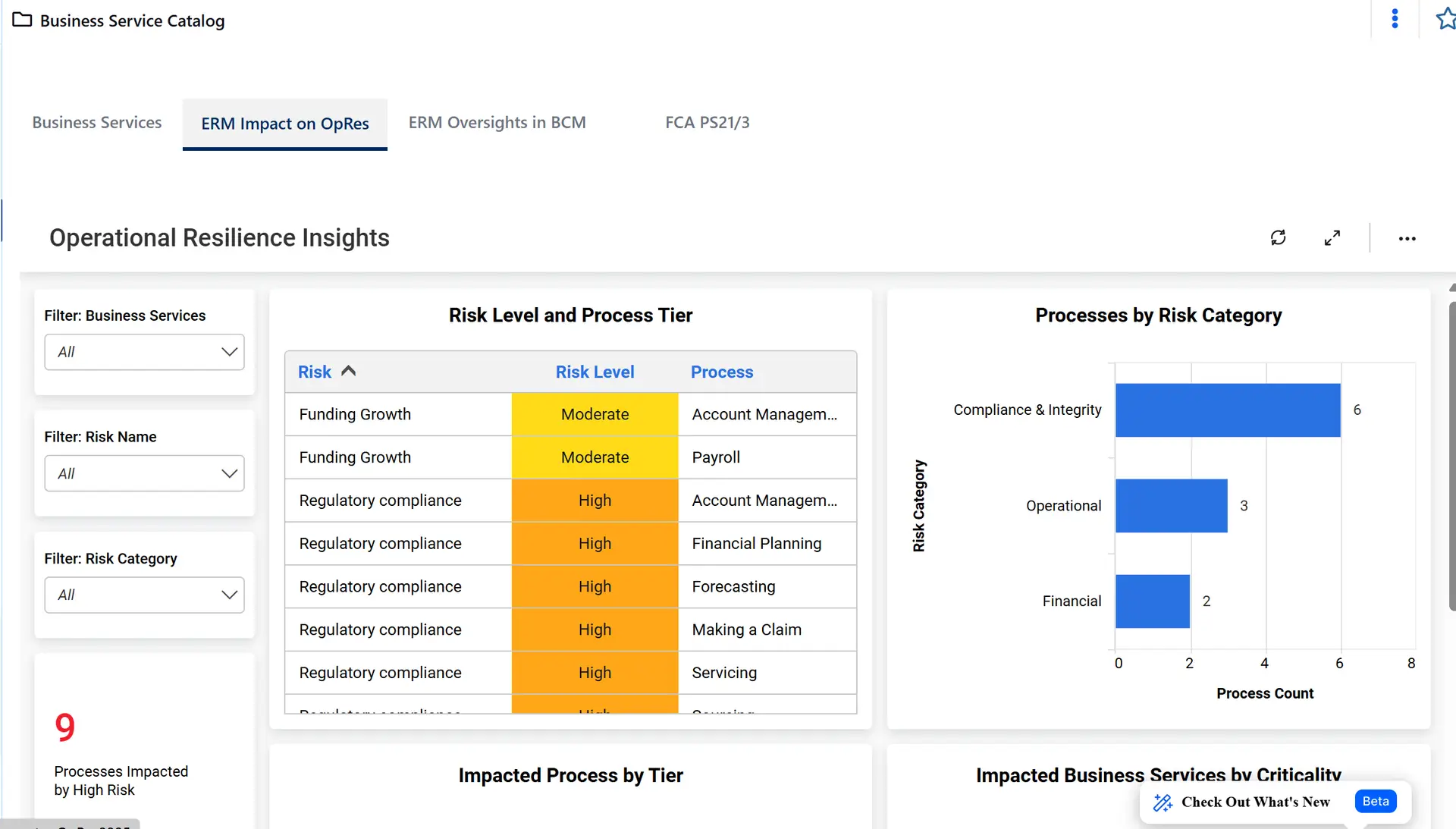SOLUTION
Operational Resilience

Put Resilience at the Core
of Everything You Do
Align with regulatory frameworks such as FCA, PRA, DORA, BCBS, and the Federal Reserve by building resilience directly into your operations.
From defining impact tolerances to testing recovery capabilities, you can protect customers and stakeholders with confidence.
• Continuity
Map the Customer Journey
CLDigital 360 gives organizations the ability to maintain programs over time, even as the demands upon those programs change. By mapping business services to the underlying people, processes, technology, locations, and vendors, CLDigital 360 users build operational intelligence and insights that can be applied to any number of business and/or recovery strategies.
Download the Operational Resilience guide to learn more.
Deepen Your Understanding
of Critical Connections
Go beyond surface-level monitoring with dashboards, dependency mapping, and scenario testing
These capabilities reveal hidden vulnerabilities, validate impact tolerances, and confirm your strategies will hold up under real-world stress.
With this visibility, you can dismantle silos, pinpoint dependencies, and make informed decisions that reduce disruption and strengthen oversight.

BENEFITS
Accelerated Readiness
Cut Initiative Time
Save $1.5M Annually
Maintain Critical Services
FAQ
Solution FAQs
What is Operational Resilience?
What are the key functionalities of Operational Resilience?
What are the benefits of Operational Resilience?
What are the challenges of Operational Resilience?
GET STARTED
Let's Connect
Discover how our platform can help you achieve better outcomes and you prepare for what’s next in risk and resilience.